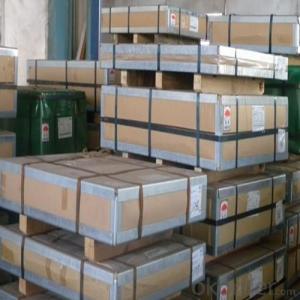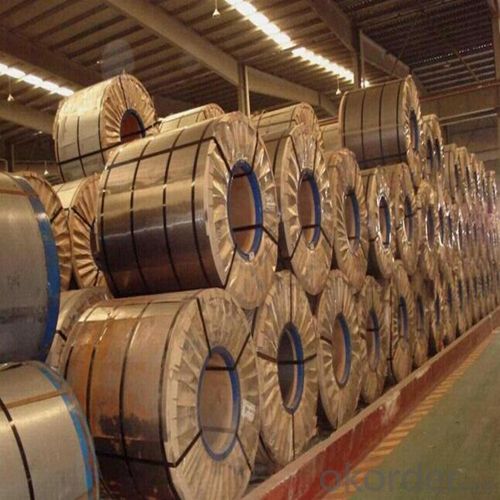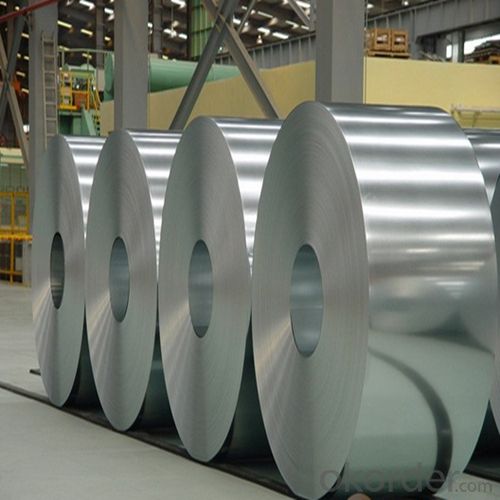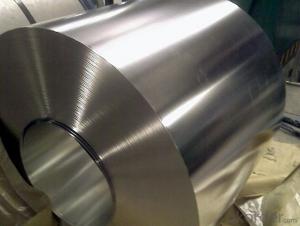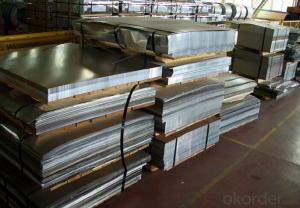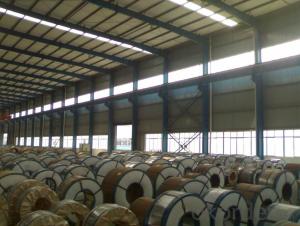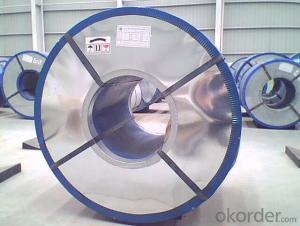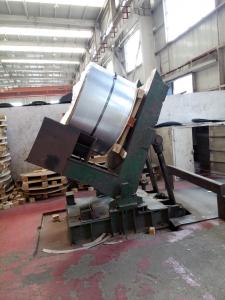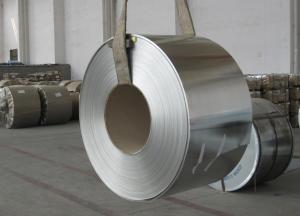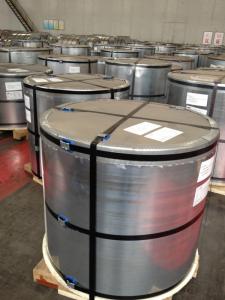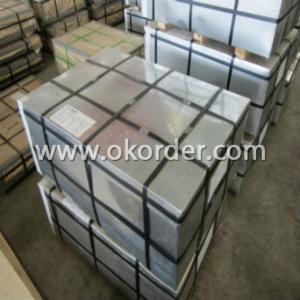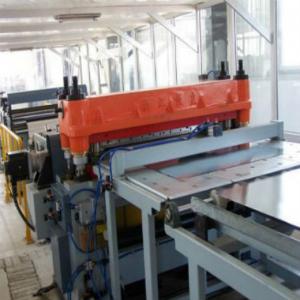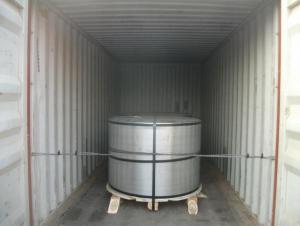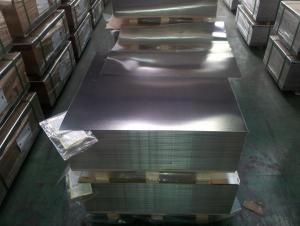Electrolytic Tinning Plate for Can Making
- Loading Port:
- Tianjin
- Payment Terms:
- TT OR LC
- Min Order Qty:
- 25 unit
- Supply Capability:
- 7000 unit/month
OKorder Service Pledge
OKorder Financial Service
You Might Also Like
1.Structure of Electrolytic Tinning Plate for Can Making Description
Electrolytic Tin Plate Coils and Sheets for Foods Metal Packaging, is one thin steel sheet with a coating of tin applied by electrolytic deposition. Tinplate made by this process is essentially a sandwich in which the central core is strip steel. This core is cleaned in a pickling solution and then fed through tanks containing electrolyte, where tin is deposited on both sides. As the strip passes between high-frequency electric induction coils, it is heated so that the tin coating melts and flows to form a lustrous coat.
2.Main Features of the Electrolytic Tinning Plate for Can Making
Appearance – Electrolytic Tin Plate is characterized by its beautiful metallic luster. Products with various kinds of surface roughness are produced by selecting the surface finish of the substrate steel sheet.
Paintability and printability – Electrolytic Tin Plates have excellent paintability and printability. Printing is beautifully finished using various lacquers and inks.
Formability and strength – Electrolytic Tin Plates have got very good formability and strength. By selecting a proper temper grade, appropriate formability is obtained for different applications as well as the required strength after forming.
Corrosion resistance – Tinplate has got good corrosion resistance. By selecting a proper coating weight, appropriate corrosion resistance is obtained against container contents. Coated items should meet 24 hour 5 % salt spray requirement.
Solderability and weldability – Electrolytic Tin Plates can be joined both by soldering or welding. These properties of tinplate are used for making various types of cans.
Hygienic – Tin coating provides good and non toxic barrier properties to protect food products from impurities, bacteria, moisture, light and odours.
Safe – Tinplate being low weight and high strength makes food cans easy to ship and transport.
Eco friendly – Tinplate offers 100 % recyclability.
Tin is not good for low temperature applications since it changes structure and loses adhesion when exposed to temperatures below – 40 deg C.
3.Electrolytic Tinning Plate for Can Making Images
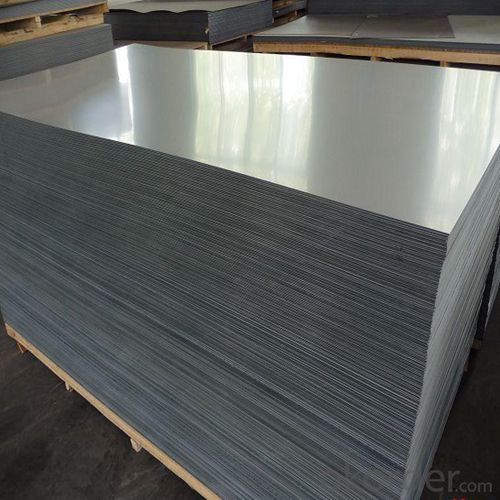
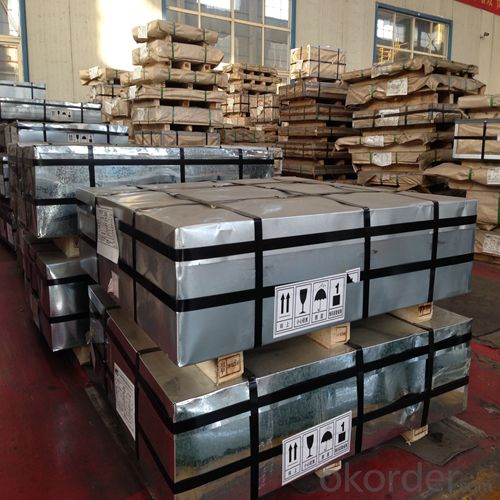

4.Electrolytic Tinning Plate for Can Making Specification
Standard | ISO 11949 -1995, GB/T2520-2000,JIS G3303,ASTM A623, BS EN 10202
|
Material | MR,SPCC |
Thickness | 0.15mm - 0.50mm |
Width | 600mm -1150mm |
Temper | T1-T5 |
Annealing | BA & CA |
Coil Inner Diameter | 508mm |
Weight | 6-10 tons/coil 1~1.7 tons/sheets bundle |
Passivation | 311 |
Oil | DOS |
Surface | Finish,bright,stone,matte,silver |
5.FAQ of Electrolytic Tinning Plate for Can Making
- How are the Electrolytic Tin Plates specified?
The Electrolytic Tin Plates are specified as per the steel base, extent of tempering, the coating weight, annealing method and the surface finish.
- How many types there are for base steels?
The base steels are of three types: Type MR, L, D
-What your tinplate material is used for ?
Tinplate is widely used for the packaging of products. Such as food cans,
beverage cans, pet cans, closures, general line cans and so on.
- Q: How does tinplate packaging contribute to product protection against leakage?
- Tinplate packaging contributes to product protection against leakage primarily due to its durable and corrosion-resistant properties. The tin coating on the steel substrate prevents any contact between the product and the surrounding environment, minimizing the risk of leakage. Additionally, tinplate packaging is often manufactured using advanced sealing techniques, ensuring airtight and leak-proof closures. Overall, the robust nature of tinplate packaging serves as a reliable barrier, safeguarding the product from potential leakage and preserving its quality.
- Q: What are the common sizes and shapes of tinplate containers?
- Common sizes and shapes of tinplate containers include round cans, rectangular cans, and square cans. These containers can come in various sizes ranging from small tins for spices or cosmetics to larger tins for food products or industrial purposes.
- Q: Can tinplate packaging be used for household products?
- Yes, tinplate packaging can be used for household products. Tinplate is a durable and versatile material that is commonly used for packaging various products, including household items such as food, beverages, cosmetics, and cleaning supplies. It provides protection against moisture, light, and other external factors, ensuring the quality and longevity of the packaged goods. Additionally, tinplate packaging offers an appealing aesthetic and can be easily recycled, making it a suitable choice for sustainable and eco-friendly packaging solutions.
- Q: How does tinplate packaging protect against moisture and oxygen?
- Tinplate packaging creates a protective barrier against moisture and oxygen due to its inherent properties. The tin coating on the steel substrate acts as a reliable shield, preventing the entry of moisture and oxygen into the packaged contents. This barrier ensures the preservation and freshness of the product, extending its shelf life and preventing spoilage or degradation caused by exposure to these elements.
- Q: What are the industry standards for tinplate?
- The industry standards for tinplate typically include specifications regarding the thickness, coating weight, surface finish, and mechanical properties of the tinplate. These standards ensure that tinplate meets the required quality and performance criteria in various industries, such as packaging, automotive, and electronics.
- Q: Can tinplate packaging be used for beverages?
- Yes, tinplate packaging can be used for beverages. Tinplate is commonly used for beverage cans as it provides a durable and protective barrier against moisture and oxygen, ensuring the quality and shelf life of the drink. Additionally, tinplate is recyclable, making it an environmentally friendly choice for packaging beverages.
- Q: How is tinplate different from other types of steel?
- Tinplate is different from other types of steel due to its unique coating of tin on both sides, which provides corrosion resistance, enhances the material's appearance, and makes it suitable for packaging applications.
- Q: Can tinplate be used for packaging beauty and skincare products?
- Yes, tinplate can be used for packaging beauty and skincare products. Tinplate is a commonly used material in the packaging industry due to its durability, corrosion resistance, and ability to protect products from external factors. It is also easily customizable, allowing for attractive and eye-catching designs that can enhance the appeal of beauty and skincare products.
- Q: Can tinplate be used for packaging soups and broths?
- Yes, tinplate can be used for packaging soups and broths. Tinplate is a commonly used material in the food packaging industry due to its durability, ability to withstand high temperatures, and resistance to corrosion. It helps to preserve the quality of the product and ensure its safety during transportation and storage.
- Q: How does tinplate contribute to the safety of toys?
- Tinplate contributes to the safety of toys by providing a durable and non-toxic material that is resistant to corrosion and can withstand rough play. It also helps to prevent sharp edges, reducing the risk of injuries. Additionally, tinplate is often used to create protective coatings on toys, making them less prone to breakage and ensuring they meet safety standards.
Send your message to us
Electrolytic Tinning Plate for Can Making
- Loading Port:
- Tianjin
- Payment Terms:
- TT OR LC
- Min Order Qty:
- 25 unit
- Supply Capability:
- 7000 unit/month
OKorder Service Pledge
OKorder Financial Service
Similar products
Hot products
Hot Searches
Related keywords
